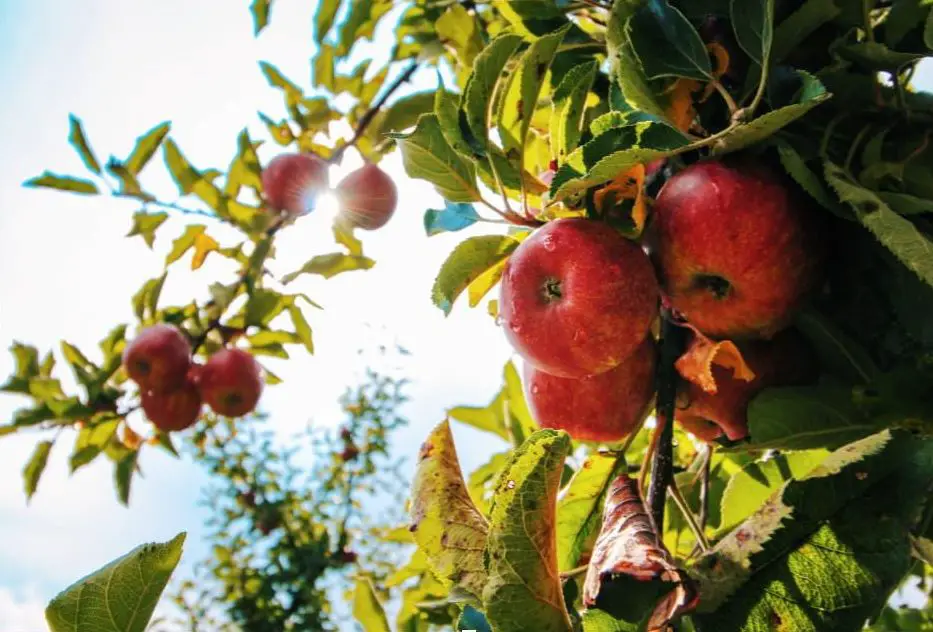The west and north central states of the United States often have frigid winters and warm to scorching summers. Such circumstances offer a sufficient number of chilling days to encourage fruit production. Although the weather is similar, there are some variations. However, the suggestions for the best fruit trees in Montana will also apply to South Dakota. Due to the extreme cold, it may be necessary to take extra precautions, such as covering trees with frost fabric in the early spring or painting them to avoid winter scald.
Fruit trees that flourish in Montana and other places with cold winters are best planted in the spring. Pears, plums, and other fruits that need a lot of freezing are grown in the Great Plains and Northern Rockies. Apricot-producing plants may also thrive, although frost protection is sometimes required because they blossom early. Apples and pears are popular pome fruits in the area because of their resistance to cold and mild frost. Cherries are a great choice for the garden since they are both sweet and sour.

Before Selecting Trees
Reputable nurseries will sell hardy plants in the area. The first issue to consider when picking a fruit tree is this. The location is the second. To determine the pH and nutritional levels of the soil, do a soil test. If required, amend the area before planting. The pH range most fruit trees enjoy is 6.0 to 7.7. Ensure there is enough runoff, and there won’t be any pools of standing water, which might lead to root rot and fungus. The regions should have a sunny exposure, preferably in the south or west, and be clear of frost pockets where cold air may gather. Having some wind barrier to protect the tree from northern winds is best. A high fence is required in rural and even some urban situations to prevent grazing animals from damaging the tree.
Nebraska and Other North Central Locations Fruit Tree Types
Many think fruit trees do not grow well in these states because of the often harsh winters. However, the development of orchards in the area has a lengthy history. Make sure the tree’s rootstock is robust. For example, South Dakota is a hard, relatively easy place for quince rootstock. These states are perfect for pears, apples, cherries, plums, and apricots. However, nectarines and peaches may have a short lifespan and must be planted in extremely protected areas. The rootstock should be hardy in USDA zones 4 and 5 for optimal results. The chosen tree’s rootstock must also be high-yielding, non-suckering, and resistant to local pests and diseases. In addition, many fruit trees need a pollinator to produce fruit.
Fruit trees for the West and North Central Regions of the US
Fruit trees will do well in most of the area if grown in North Dakota. Microclimate is one area to pay particular attention to. Even though the state has a hardiness rating of 5, there are still regions with ratings of 4 or even 3. In general, some excellent selections include:
Plums
- Red Diamond
- Compass
- Sapalta
- Black Ice
- Superior
Cherries
- Northstar
- Meteor
Pears
- Golden Spice
- Parker
- Honeycrisp
- Frostbite
- Snowsweet
Apples
- Wealthy
- Carrol
- Duchess
- Oldenburg
- Goodland
Apricots
- Moon gold
- Sungold
Asian Pears
- Chojuro
- Hosui
- Shinseiki


